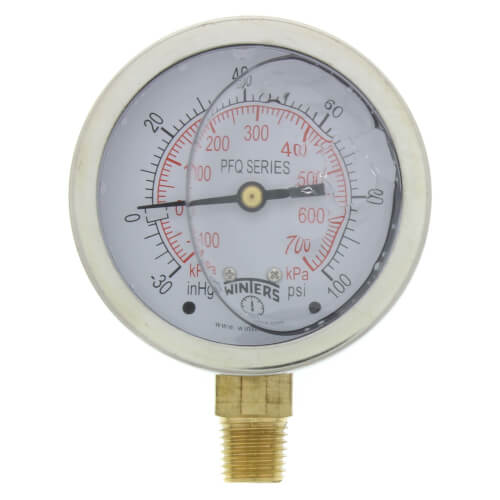Derek_pied
New Member
I was up at the cottage yesterday to check on it after the winter and decided to try to get the lake water going. The system has a foot valve in the lake, an injector at the shore and a pump & pressure tank halfway up the hill to the cottage.
Every spring I seem to have some sort of little problem with it. This year I inspected and then put it all together, primed the pump (takes about 2 buckets worth of water) and fire it up. It built up to 10 PSI then dropped to 0. It seemed like the pump lost it's prime or something. There was still pressure in the tank. I had to drain the pressure from the tank by opening the hose bib on the output side of the tank, primed it again with a bit of water and turned it on. same thing happened and I did it one more time after that. Then I started looking at other things.
The water enters the pressure tank from the pump on top, and the air valve for the tank is near the bottom. When I took the cap off I could hear some hissing and I could feel a bit of pressure when I covered it with my finger. So that's probably not supposed to happen and needs attention.
What I wanted to know is if these 2 things are related (pressure loss/ prime loss 0-10PSI, and the pressure tank issue)? Obviously the pressure tank needs attention or replacing but since the cottage it 2 hours and a boat ride away I can't hop over to a hardware store to get this and that and the other thing so I want to be armed with anything I might need the next time I go up.
Pressure gauge and pressure switch are 2 years old. I have no idea how old the pump and tank are. They came with the cottage and the way I put it together and operate it are as explained to me when we bought the cottage 4 years ago. The cottage itself is quite a bit higher than the water level which I assume is why the system has the injector.
I would really appreciate any help or suggestions to fix this.
is there an easier system to operate that I should consider that can pump water up a good height?
Every spring I seem to have some sort of little problem with it. This year I inspected and then put it all together, primed the pump (takes about 2 buckets worth of water) and fire it up. It built up to 10 PSI then dropped to 0. It seemed like the pump lost it's prime or something. There was still pressure in the tank. I had to drain the pressure from the tank by opening the hose bib on the output side of the tank, primed it again with a bit of water and turned it on. same thing happened and I did it one more time after that. Then I started looking at other things.
The water enters the pressure tank from the pump on top, and the air valve for the tank is near the bottom. When I took the cap off I could hear some hissing and I could feel a bit of pressure when I covered it with my finger. So that's probably not supposed to happen and needs attention.
What I wanted to know is if these 2 things are related (pressure loss/ prime loss 0-10PSI, and the pressure tank issue)? Obviously the pressure tank needs attention or replacing but since the cottage it 2 hours and a boat ride away I can't hop over to a hardware store to get this and that and the other thing so I want to be armed with anything I might need the next time I go up.
Pressure gauge and pressure switch are 2 years old. I have no idea how old the pump and tank are. They came with the cottage and the way I put it together and operate it are as explained to me when we bought the cottage 4 years ago. The cottage itself is quite a bit higher than the water level which I assume is why the system has the injector.
I would really appreciate any help or suggestions to fix this.
is there an easier system to operate that I should consider that can pump water up a good height?

